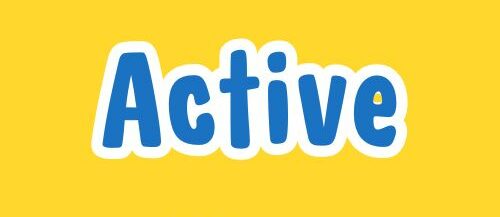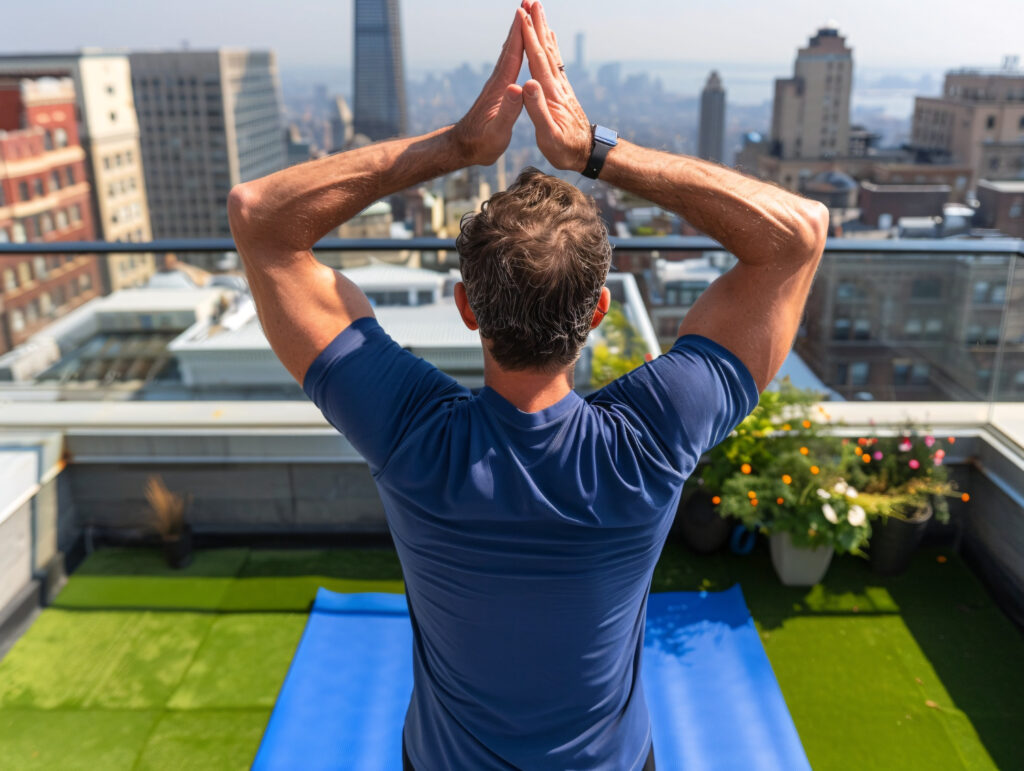In today’s fitness world, there’s a growing interest in strength training that doesn’t rely on weights or machines. Bodyweight strength exercises are a fantastic way to build muscle, increase power, and improve overall physical performance. These exercises require nothing but your own body, making them accessible and effective for all fitness levels. Whether you’re at home, in the park, or traveling, you can develop a solid workout routine with bodyweight exercises.
In this comprehensive guide, we’ll explore a variety of exercises to help you build muscle and power, the benefits of bodyweight training, and how you can incorporate these exercises into your fitness plan.
Introduction to Bodyweight Strength Training
Bodyweight strength exercises have been around for centuries, with people using their own bodies to build muscle and power long before the invention of weights and gym equipment. Whether it’s push-ups, squats, or lunges, bodyweight exercises focus on functional movements that engage multiple muscle groups at once.
Why Bodyweight Training?
Bodyweight exercises are not just for beginners or those who lack access to a gym. These exercises are highly effective in building strength, power, and endurance, while also improving balance, flexibility, and coordination. Some of the key reasons why bodyweight training is an excellent option for building muscle and power include:
- Versatility: You can do these exercises anywhere, without the need for any equipment.
- Progressive: Bodyweight exercises can be modified to become more challenging as you get stronger.
- Engages Core: Most bodyweight exercises naturally engage your core, leading to better overall stability and strength.
- Functional Movement: These exercises mimic real-life movements, improving everyday strength and mobility.
Benefits of Bodyweight Exercises
Bodyweight exercises offer numerous benefits beyond just building muscle. Here’s a look at why incorporating bodyweight strength training into your fitness routine is so effective.
Build Lean Muscle Mass
When performed consistently and with the right technique, bodyweight exercises can increase muscle mass. Movements like push-ups, pull-ups, and squats help you develop strength while also toning muscles, leading to a leaner and more defined physique.
Improve Power and Explosiveness
Many bodyweight exercises emphasize explosive movements, such as jump squats or plyometric push-ups. These exercises help build fast-twitch muscle fibers, which are key for improving power and speed in activities like sprinting, jumping, and sports performance.
Increase Flexibility and Mobility
Bodyweight exercises often involve a greater range of motion compared to traditional weightlifting. Movements like lunges, yoga poses, and planks help improve your flexibility and mobility, reducing the risk of injury and improving your overall movement efficiency.
Enhance Core Strength
Almost every bodyweight exercise requires core engagement. Movements like planks, mountain climbers, and leg raises not only build core muscles but also contribute to better posture, stability, and balance in your daily life.

The Best Bodyweight Strength Exercises for Building Muscle and Power
Now that we’ve explored the benefits of bodyweight training, let’s dive into some of the best exercises you can use to build muscle and increase power. These exercises target major muscle groups and are suitable for various fitness levels.
Push-Ups
Push-ups are a staple in bodyweight strength training, targeting the chest, shoulders, triceps, and core. They can be easily modified to increase difficulty and challenge different muscle groups.
How to Perform a Push-Up:
- Start in a plank position with your hands placed slightly wider than shoulder-width apart.
- Lower your body until your chest nearly touches the ground, keeping your elbows close to your body.
- Push through your palms to return to the starting position.
Push-Up Variations:
- Wide-Grip Push-Ups: Place your hands wider than usual to emphasize the chest muscles.
- Diamond Push-Ups: Place your hands close together under your chest to target the triceps.
- Plyometric Push-Ups: Explode off the ground during the upward movement to build power.
Squats
Squats are a foundational movement that targets the legs, glutes, and core. They help build strength, power, and endurance in the lower body.
How to Perform a Squat:
- Stand with your feet shoulder-width apart.
- Lower your body as if sitting in a chair, keeping your chest up and knees aligned with your toes.
- Drive through your heels to return to a standing position.
Squat Variations:
- Jump Squats: Add a jump at the top of the squat to build explosive power.
- Pistol Squats: Perform a squat on one leg to target balance, stability, and leg strength.
- Sumo Squats: Widen your stance and point your toes outward to target the inner thighs.
Pull-Ups
Pull-ups are one of the most effective upper-body exercises, engaging the back, biceps, shoulders, and core.
How to Perform a Pull-Up:
- Grab a bar with your palms facing away from you, hands slightly wider than shoulder-width apart.
- Pull your body up until your chin clears the bar.
- Lower yourself back down with control.
Pull-Up Variations:
- Chin-Ups: Use an underhand grip to focus more on the biceps.
- Wide-Grip Pull-Ups: Place your hands wider to target the back muscles more intensely.
- L-Sit Pull-Ups: Hold your legs in front of you in an “L” position while performing the pull-up to engage your core.
Lunges
Lunges are an excellent way to build leg strength while improving balance and stability.
How to Perform a Lunge:
- Step forward with one leg and lower your body until both knees are bent at a 90-degree angle.
- Push off your front leg to return to the starting position.
- Repeat on the other leg.
Lunge Variations:
- Walking Lunges: Step forward into the next lunge without returning to the standing position.
- Jump Lunges: Add a jump as you switch legs to build explosive leg power.
- Reverse Lunges: Step backward instead of forward to target different leg muscles.
Planks
Planks are a powerful core exercise that also strengthens the shoulders, back, and glutes.
How to Perform a Plank:
- Start in a push-up position, but rest on your forearms instead of your hands.
- Keep your body in a straight line from head to heels, engaging your core and glutes.
- Hold the position for as long as you can while maintaining proper form.
Plank Variations:
- Side Planks: Perform the plank on one side to target the obliques.
- Plank with Shoulder Taps: Tap your shoulders alternately while in the plank position to add instability and challenge your core.
- Plank to Push-Up: Move from the plank to a full push-up position for added difficulty.
Dips
Dips are a great exercise for targeting the triceps, shoulders, and chest.
How to Perform a Dip:
- Position yourself on parallel bars or the edge of a bench with your hands shoulder-width apart.
- Lower your body until your upper arms are parallel to the ground.
- Push back up to the starting position.
Dip Variations:
- Bench Dips: Use a bench or chair to perform dips at home.
- Ring Dips: Perform dips on gymnastic rings for increased instability and core engagement.
- Plyometric Dips: Add an explosive push at the top of the movement to build power.
How to Incorporate Bodyweight Strength Exercises into Your Routine
To get the most out of bodyweight strength exercises, it’s important to structure your workouts for optimal muscle growth and power development. Here’s how to create a balanced routine:
Full-Body Workouts
One effective way to build muscle and power with bodyweight exercises is to perform full-body workouts that hit all major muscle groups. This ensures you’re developing balanced strength and targeting multiple areas at once.
Sample Full-Body Workout:
- Push-Ups: 3 sets of 12-15 reps
- Squats: 3 sets of 15-20 reps
- Pull-Ups: 3 sets of 8-10 reps
- Lunges: 3 sets of 12-15 reps per leg
- Planks: 3 sets of 30-60 seconds
Upper and Lower Body Splits
If you want to focus more on specific muscle groups, you can split your workouts into upper body and lower body days.
Upper Body Day:
- Push-Ups: 4 sets of 12-15 reps
- Pull-Ups: 4 sets of 8-10 reps
- Dips: 4 sets of 10-12 reps
- Plank with Shoulder Taps: 3 sets of 30-45 seconds
Lower Body Day:
- Squats: 4 sets of 15-20 reps
- Lunges: 4 sets of 12-15 reps per leg
- Jump Squats: 3 sets of 10-12 reps
- Side Planks: 3 sets of 30-45 seconds per side
Progressive Overload
Just like traditional strength training, bodyweight exercises require progressive overload to continue building muscle and power. This means increasing the difficulty of the exercises over time by adding reps, sets, or more challenging variations.
Ways to Implement Progressive Overload:
- Increase the number of repetitions or sets.
- Add a pause at the bottom of the movement to increase time under tension.
- Incorporate more advanced variations, such as plyometric or one-legged versions of the exercises.
You can also read : How to Create a Balanced Meal Plan for Your Fitness Goals
Conclusion
Bodyweight strength exercises are an excellent way to build muscle, power, and overall fitness without the need for weights or equipment. By focusing on functional movements, these exercises can help you achieve a lean, strong, and powerful physique. Whether you’re a beginner or an experienced athlete, bodyweight training offers endless opportunities to progress and challenge yourself.
Start incorporating these exercises into your fitness routine, and you’ll soon experience the benefits of improved strength, power, and overall physical performance.



